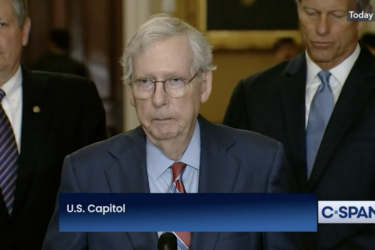You may have seen a flurry of stories late last year noting that divorce rates are rising for baby boomers even as they’re on a downward slide overall across the United States.
You may have wondered, as I did, how these divorcees would navigate the passage into later middle age – and old age – and whether they would enter into new intimate relationships.
It’s an issue that has a health dimension: People who are married tend to live longer, be less depressed, and indulge less frequently in risky behaviors than those who are not, according to comprehensive study of the health effects of marriage published in 2007.
Conversely, getting divorced or becoming widowed has a significant negative impact on people’s health, according to an important 2009 study by researchers from the University of Chicago and Johns Hopkins School of Public Health. As CNN reported:
(The authors) found that divorced or widowed people have 20 percent more chronic health conditions such as heart disease, diabetes or cancer than married people. They also have 23 percent more mobility limitations, such as trouble climbing stairs or walking a block.
This topic – baby boomers and their intimate partnerships – has loads of human appeal. Who among us isn’t interested in love, sex and relationships and how they change over the course of peoples’ lives and different social eras?
Now, there’s a new wrinkle that’s worth paying attention to: It appears that baby boomers are shacking up much more often when they find someone who lights their fire than has been true in the past, according to new study in the August issue of the Journal of Marriage and Family.
Randy Dotinga covered the research for HealthDay:
“Cohabitation is really taking hold across the generations. It is now a viable alternative to marriage, even to older adults,” said Susan Brown, the study’s lead author and co-director of the National Center for Family and Marriage Research at Bowling Green State University in Ohio.
Although the overall number of older people who are living together is still small compared to those who are single or married, it more than doubled in 10 years: About 2.75 million people over the age of 50 were cohabiting in the United States in 2010 compared to 1.2 million a decade earlier, according to the research. Among those aged 50 to 64, 12 percent of single people were living together in 2010, up from just 7 percent a decade earlier.
So many questions beg to be answered: Were these individuals married before? Did this shape their choice not to get married again – and if so, how? How do they work out the finances and household responsibilities? Do they have children? If so, what do they think of the arrangement? Are they unequivocally committed to each other? Or, have they agreed to take it day by day and walk out the door if things don’t work out, with no hard feelings attached?
That doesn’t seem to be the case, according to Dotinga’s report:
The findings suggest that people who live together have remarkably stable relationships, Brown said.
“They seem to be a long-term alternative to marriage,” she said. “That’s not at all what we see for younger people, for whom cohabitation is a stepping stone to marriage, a way to test out the relationship.”
… Living together can have financial benefits for older people, Brown said. Widows or widowers don’t have to give up their spouses’ Social Security benefits if they don’t get married, and unmarried people can avoid taking on the medical debts of their partners, she said.
Also, she said, “many women aren’t interested in getting remarried later in life. They say, ‘I took care of one man, and I’m not interested in taking care of another.’”
I can’t think of an editor who wouldn’t jump at a story about this topic if a reporter was able to find several older cohabitating couples willing to share their experiences.
What are the health care implications of cohabitation for older adults? That’s an obvious question, but one to which I don’t have an answer.
It could be that intimacy itself confers health benefits. Or, it could be that intimate relationships that are perceived as safe and secure confer these benefits. Or it could be an entirely different story altogether. Who knows?
In the best of all possible worlds, a researcher would have looked at marriage among older adults and cohabitation among older adults and compared the health effects of each kind of relationship, while controlling for other factors such as income, education, and employment. Failing that, experts may be willing to speculate on this new cohabitation trend and its implications for older adults’ health and well being by doing what they so often do – extrapolating from what evidence exists to what seems reasonable.
Wouldn’t you be interested to learn what they might say? And don’t you think your readers/viewers/listeners would be interested as well?
 Judith Graham (@judith_graham), AHCJ’s topic leader on aging, is writing blog posts, editing tip sheets and articles and gathering resources to help our members cover the many issues around our aging society. If you have questions or suggestions for future resources on the topic, please send them to judith@healthjournalism.org.
Judith Graham (@judith_graham), AHCJ’s topic leader on aging, is writing blog posts, editing tip sheets and articles and gathering resources to help our members cover the many issues around our aging society. If you have questions or suggestions for future resources on the topic, please send them to judith@healthjournalism.org.









